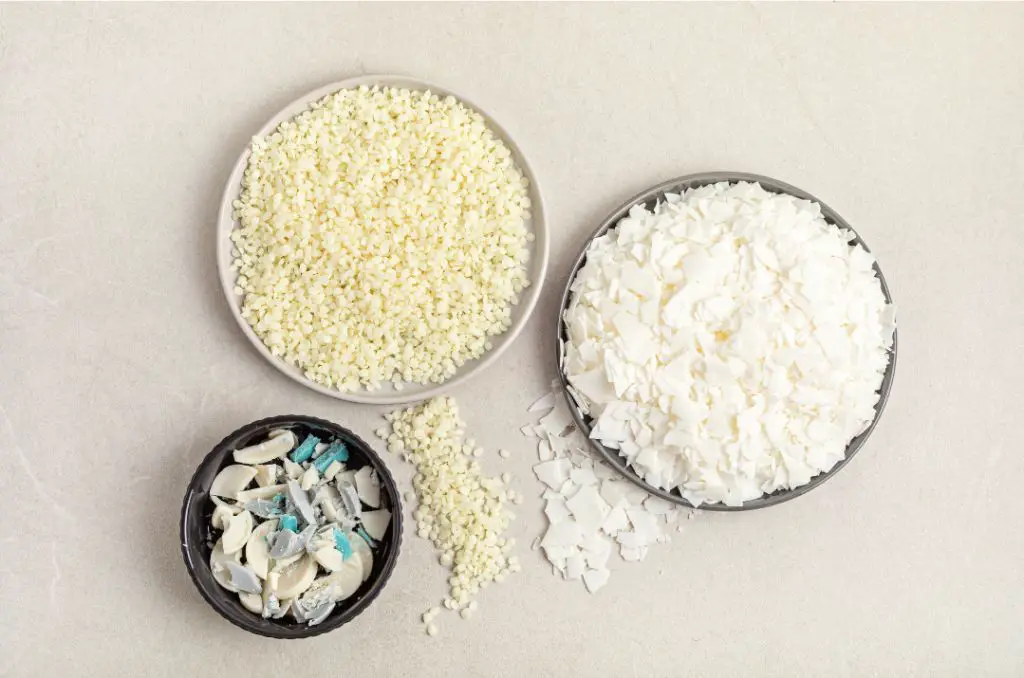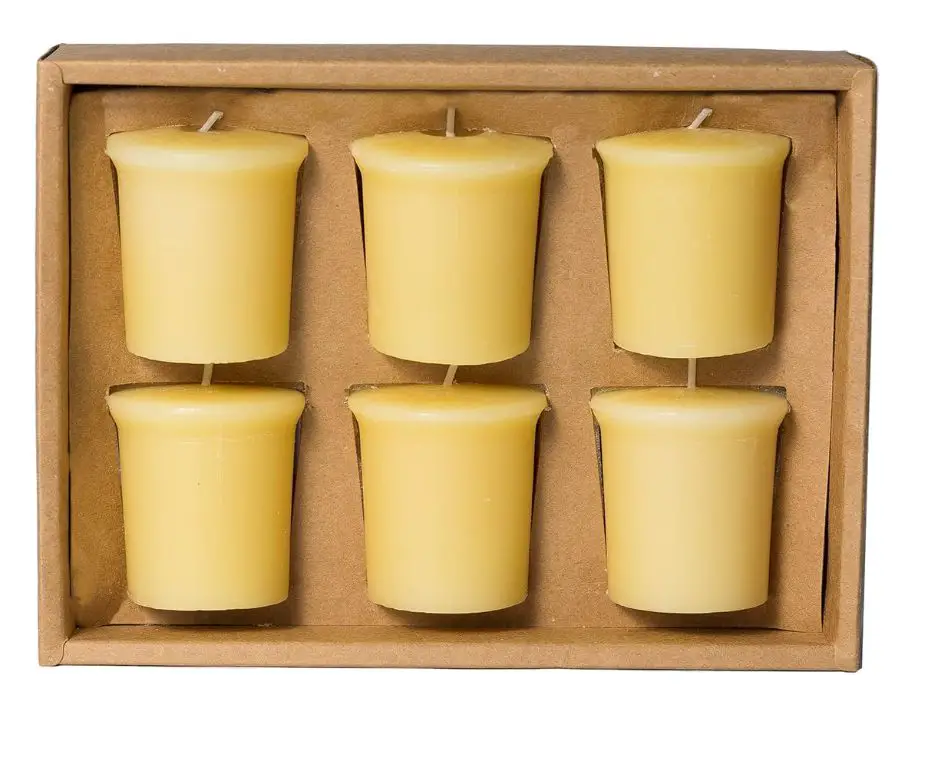What Is 100% Natural Wax?
What is Natural Wax?
Natural wax is a substance produced by living organisms such as plants, animals, and insects. It is secreted by glands as a thick, oily substance that then hardens into wax (Wikipedia, 2022). Natural waxes are composed primarily of esters of fatty acids and alcohols.
Some common examples of natural waxes include:

- Beeswax – Produced by honey bees to build the walls of their honeycomb. Beeswax consists of palmitate, palmitoleate, and oleate esters (Foreverest, 2018).
- Soy wax – Derived from hydrogenated soybean oil. It is mainly composed of hydrogenated soybean oil.
- Bayberry wax – Obtained from the surface of bayberry shrubs. It contains palmitate, myristate, and laurate esters.
- Carnauba wax – Derived from the leaves of a palm tree native to Brazil. It consists of fatty acid esters, diesters, and hydroxyesters.
In general, natural waxes are high in esters and free of paraffin, making them more biodegradable and ecologically friendly than synthetic petroleum-based waxes.
How is Natural Wax Made?
Natural waxes are produced from plant, animal, and insect sources. Beeswax, for example, is secreted by worker honeybees to create the walls of their honeycomb. Bees collect the wax flakes and use them to build honeycomb cells. The wax is harvested by beekeepers when they extract honey from the honeycomb.
Carnauba wax comes from the leaves of the carnauba palm tree. Workers collect and dry the palm leaves, then beat them to loosen the wax. The dried wax is then refined and filtered before being exported. Other plant-based waxes include candelilla wax from a desert shrub and rice bran wax made from rice bran oil.
In contrast, synthetic waxes are artificially created through chemical processes rather than coming directly from nature. Common synthetic waxes include paraffin wax made from petroleum, microcrystalline wax, and polyethylene wax. While cheap to produce, synthetic waxes lack the complexity and benefits of natural waxes.
Overall, natural waxes originate from renewable resources through natural processes of production. Synthetic waxes require chemical processing to manufacture. Natural waxes provide unique composition and benefits not found in artificial wax varieties.
Source: https://www.calendar-canada.ca/frequently-asked-questions/what-is-wax-made-of-in-the-old-days
Properties of Natural Waxes

Natural waxes have unique physical and chemical properties that differentiate them from synthetic waxes. Some key properties include:
Melting Point – The melting point of natural waxes typically ranges from 45°C to 85°C, with beeswax around 62-65°C. The melting point depends on the type of natural wax and its chemical composition. Higher melting points make waxes more resistant to heat.
Hardness – Natural waxes are softer and more pliable compared to synthetic waxes. Their hardness levels vary based on the length of the fatty acid chains present. For example, carnauba wax is very hard while wool wax is quite soft.
Chemical Composition – Natural waxes are comprised of a mixture of organic compounds like fatty acids, fatty alcohols, esters, hydrocarbons, free fatty acids, and more. The specific compounds and ratios influence the properties. For instance, a higher wax ester content increases hardness.
Some key chemical properties are the acid value, saponification value, iodine value, and hydroxyl value. These quantify the types of reactive organic compounds present.
Uses of Natural Waxes
Natural waxes have a wide variety of uses across many industries. Some of the most common uses of natural waxes include:
Candles
One of the most well-known uses of natural wax is in candle making. Soy wax and beeswax candles, in particular, have gained popularity due to their clean-burning properties and natural fragrance (https://www.linkedin.com/pulse/natural-wax-market-size-analyzing-growth-forecasting-outlook-singh-msroc). Beeswax and soy wax candles are often marketed as eco-friendly and non-toxic alternatives to paraffin wax candles.
Cosmetics
Beeswax is commonly used as an ingredient in natural cosmetics like lip balms, lotions, and creams. It acts as an emollient, emulsifier, and thickening agent. Beeswax is also used to create natural soaps. Its water-repelling properties make it an effective protective barrier for skin and hair (https://mundoabejas.com/gb/blog/natural-beeswax-the-most-common-uses-b33.html).
Polishes
Carnauba wax, which comes from the leaves of a Brazilian palm tree, is used to create hard, glossy coatings and polishes for cars, floors, furniture and shoes. The durability and shine of carnauba wax make it useful for protective polishes.
Crayons
Paraffin wax is commonly used to manufacture crayons as it provides a smooth texture and vibrant colors. Beeswax is also sometimes used as it produces stronger, less brittle crayons.
Food
Beeswax has applications as a food additive and coating used to protect foods. It can coat fruits, vegetables, cheese, candy and gum to prevent drying out. Beeswax may also be used as an additive in chewing gum for its malleable texture.
Benefits of Natural Waxes

One of the main benefits of natural waxes is that they are natural and non-toxic. Unlike synthetic waxes like paraffin, natural waxes like beeswax, soy wax, and palm wax are made from plants and insects found in nature. They do not contain any harmful chemicals, making them a safer option for applications like candles, cosmetics, and artisan crafts. According to The Perfected Scent, natural waxes burn cleaner and emit less soot than synthetic waxes.
Another advantage of natural waxes is that they are biodegradable and renewable. Synthetic waxes are made from petroleum, a non-renewable resource. However, natural waxes like soy wax come from renewable sources like soybean plants that can be replanted year after year. When natural waxes are discarded or washed away, they break down faster in the environment compared to synthetic waxes.
Using natural waxes also supports small farmers and beekeepers. Over 70% of soy wax in the U.S. comes from American growers, as noted by Rural Earth Creations. Beeswax comes directly from beekeepers who ethically harvest beeswax. Purchasing natural waxes helps provide income for these small scale producers.
Drawbacks of Natural Waxes
While natural waxes have many benefits, they also come with some drawbacks compared to synthetic waxes. Some of the main disadvantages of natural waxes include:
May be more expensive – Natural waxes like beeswax, soy wax, and palm wax often cost more than synthetic paraffin wax. The higher cost comes from the more intensive production process required for natural waxes 1.
Limited availability – Since natural waxes rely on agricultural crops or animal byproducts, there can be limitations on the supply and consistent availability of natural waxes. This leads to higher costs and potential shortages 2.
Variable quality – The quality and properties of natural waxes can vary more batch to batch compared to synthetic waxes produced under controlled conditions. This can make formulating and working with natural waxes more difficult.
Natural Wax vs Synthetic Wax
Natural waxes like carnauba wax and beeswax are derived from plants and insects. They contain higher levels of natural oils and fats which give them a warm, deep, natural looking shine. However, natural waxes don’t last as long as synthetic waxes and need to be reapplied more often. Carnauba wax in particular is known for its brilliance and sparkle, but it can be labor intensive to harvest and refine [1].
Synthetic polymer waxes are formulated in a lab to be more durable and withstand the elements longer than natural waxes. They create a thicker, longer lasting protective layer on the paint’s surface. Synthetic waxes are also easier to apply. But some detailers feel synthetic waxes don’t provide the same level of warmth and depth as natural waxes [2].
Ultimately it comes down to personal preference and needs. Those looking for maximum protection and durability may prefer a synthetic wax. But car enthusiasts who enjoy waxing their vehicles frequently as a hobby may opt for a natural carnauba wax for its unparalleled shine and gloss [3].
Sourcing Quality Natural Wax
When looking to source quality natural wax, there are a few things to keep in mind.
First, look for reputable suppliers that specialize in natural waxes. Many candle making suppliers, cosmetics suppliers, and beekeeping suppliers will carry a selection of natural waxes like beeswax, soy wax, and candelilla wax. Go with suppliers that have expertise in natural waxes and can vouch for the quality and purity of their products.
Secondly, look for certifications. Many natural waxes will feature certifications like “100% pure”, “natural”, “eco-friendly”, etc. These help provide assurance you are getting a quality natural product. Suppliers may also have organic, fair trade, or other sustainability certifications.
You’ll also want to evaluate the properties of the wax. High quality natural waxes will advertise specifications like melting point, color, scent, and smoke point. This helps you select the right natural wax for your application.
Finally, learn to discern natural waxes through sight and smell. Pure natural waxes will look and smell distinctly plant or insect based. Become familiar with the expected scents and colors of beeswax, soy wax, bayberry wax, and other natural waxes.
Taking the time to source high quality natural waxes will pay off in the superior performance, scent, and eco-friendly benefits they provide.
Natural Wax Certifications
When looking for the highest quality natural wax, there are several key certifications to look for:
USDA Organic
Natural waxes certified as USDA Organic contain at least 95% organic ingredients and avoid the use of synthetic materials during processing. USDA Organic certification ensures the wax comes from sustainable practices without toxic pesticides, herbicides or fertilizers.
Food-Grade
Food-grade certification means the natural wax is free of harmful contaminants and safe for use even in products intended for consumption, like lip balms or cheeses. Food-grade waxes undergo stringent testing for purity.
Fair Trade
Some natural waxes come from Fair Trade certified sources, which ensures fair wages and safe working conditions for the farmers and producers. Fair Trade certification promotes environmental sustainability and community development.
Sustainably Sourced
Sustainably sourced natural waxes come from renewable materials produced through practices that protect ecosystems and wildlife. Sourcing sustainable natural wax helps preserve natural resources for future generations.
Future of Natural Waxes
The future looks bright for natural waxes, driven by growing consumer interest in natural, sustainable products. Market research predicts continued growth for the global natural wax industry in the coming years.

We can expect to see innovative new natural wax products emerge. Brands are finding novel ways to use beeswax, soy wax, and other natural waxes in cosmetics, candles, polishes, and more. For example, all-natural lip balms and lotions that use beeswax as a key ingredient are gaining popularity.
There is also a heightened focus on supporting beekeepers and soybean farmers through the natural wax supply chain. Consumers want assurance that purchasing natural wax products contributes to sustainable livelihoods for small producers. Certifications like B Corp are helping provide this transparency.
Overall, the natural wax industry is poised for expansion as manufacturers tap into consumer demand for eco-conscious products. Natural waxes allow brands to offer effective, indulgent products while also benefitting the environment and small-scale farmers and beekeepers.




